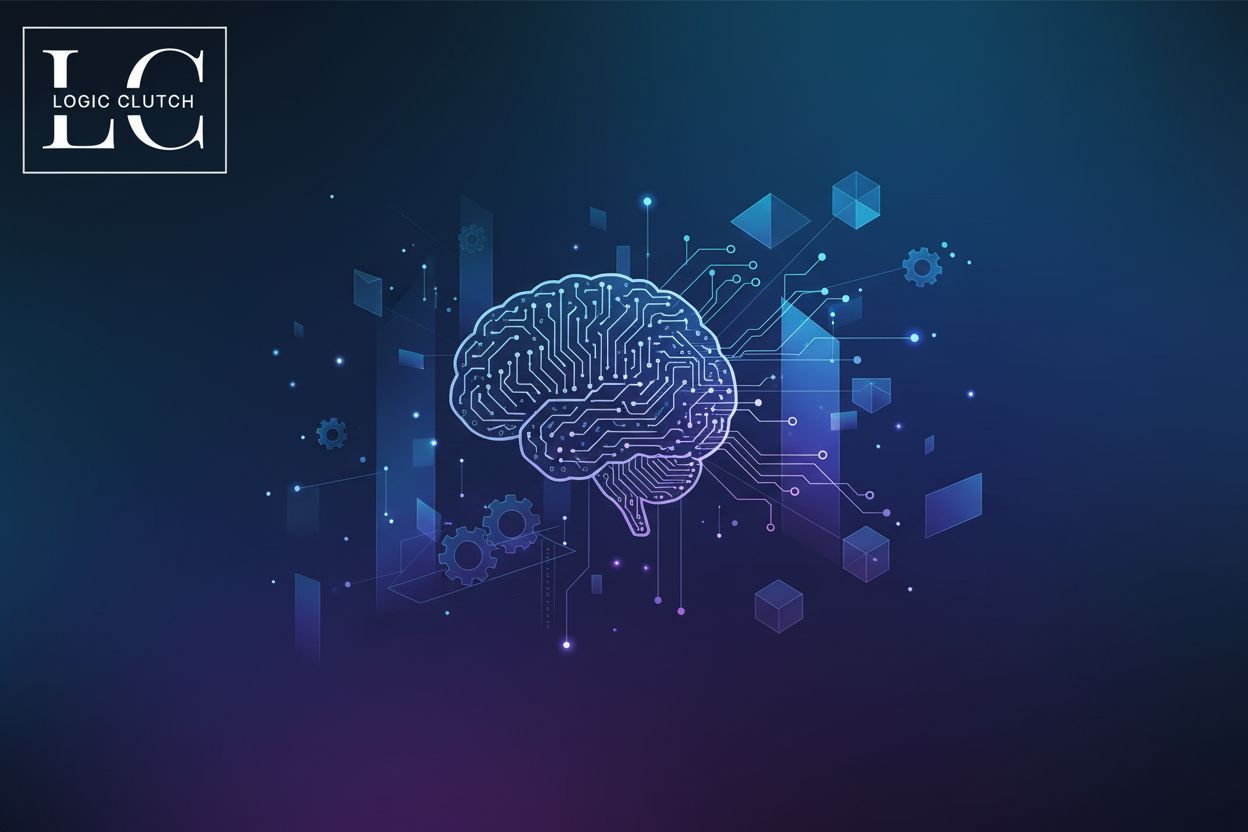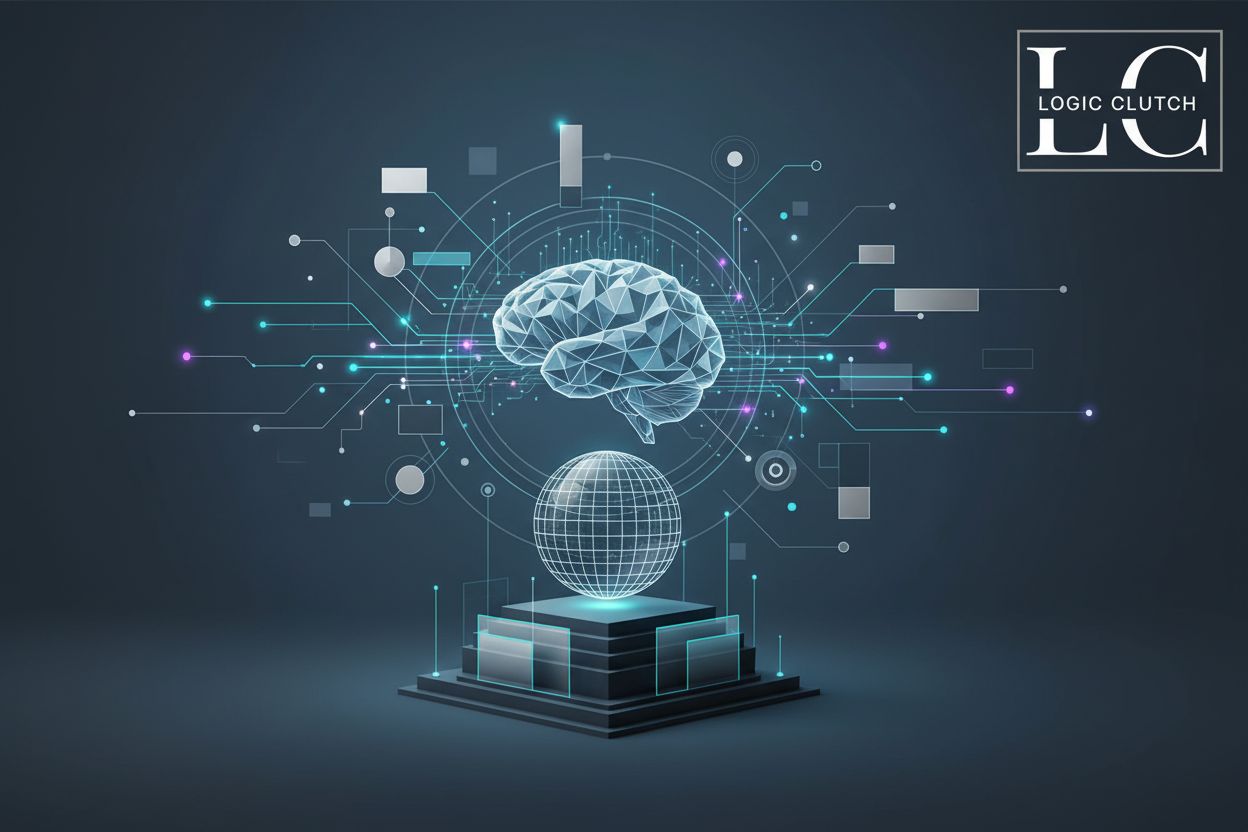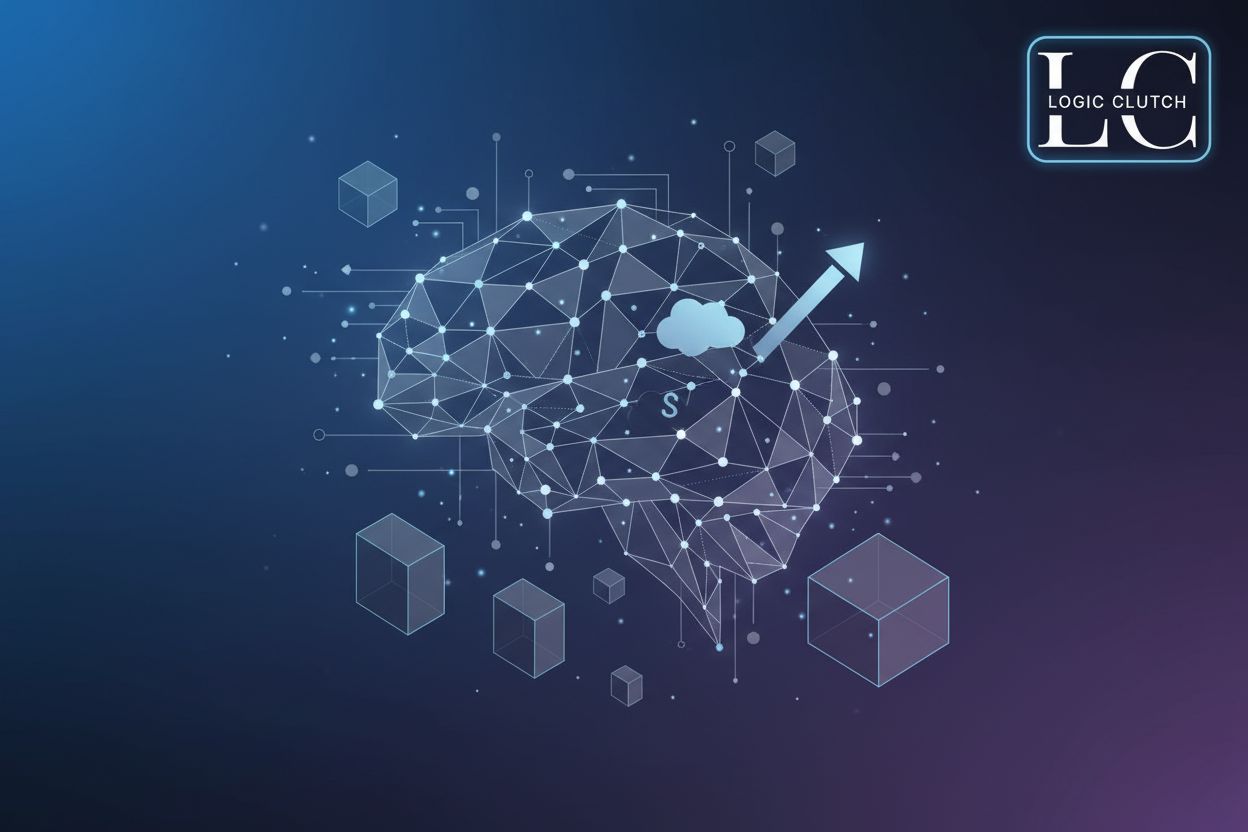Harnessing AI to Access New Data Sources for Enhanced Analytics
TL;DR
The Evolving Data Landscape and the Analytics Challenge
Okay, so here's the deal: data is everywhere. Seriously, it's like trying to avoid ads on the internet – impossible, right?
- We're drowning in data, both structured and unstructured. Think about it: you got your neatly organized databases, but then there’s all that messy stuff, like social media posts, customer reviews, and sensor data from, like, everything.
- And it's coming at us in all sorts of weird formats – text, images, videos, even data from IoT devices that are probably spying on us. Integrating all this is a total nightmare. Imagine trying to get your grandma's handwritten recipes into a fancy cooking app – that's the level of chaos we're talking about.
- Healthcare? They're dealing with patient records, genomic data, and wearable sensor info. Retail? Transaction data, customer reviews, and all sorts marketing campaign results. Finance? Trading data, fraud detection alerts, and risk assessments. It goes without saying that all these are different beasts and all needs to be handled differently!
Traditional analytics tools? Well, they're struggling to keep up. They're great for crunching numbers, but trying to make sense of unstructured data, is like trying to fit a square peg in a round hole - doesn't work. Plus, it's all manual work – data integration (combining data from different sources), data wrangling (cleaning and transforming raw data into a usable format), and data prepping (getting data ready for analysis). It's super time-consuming, especially with unstructured data where formats are inconsistent and context is hard to decipher.
And let's not forget the data silos. Different departments hoarding their own data, not sharing, making it impossible to get a complete picture. It's like trying to assemble a puzzle when half the pieces are missing.
That's where ai comes in. It can automate data discovery, integration, and even improve data quality. Plus, it can do real-time analytics – which is a game-changer. Ultimately, it leads to better, faster decision-making.
Because traditional tools struggle with the sheer volume and variety of data, and manual processes are just too slow, ai offers a way to finally make sense of it all and unlock the insights hidden within new data sources.
AI Techniques for Unlocking New Data Sources
Ever feel like you're missing out on valuable insights because your data's locked away in some weird format? Turns out, ai can be the key to unlocking those hidden treasures.
So, you've got piles of customer reviews, support tickets, and social media posts. It's all just... text. But within that text lies a goldmine of information. Natural Language Processing, or nlp, is like giving your computer the ability to read and understand human language. It's not perfect - but gets the job done.
- Extracting insights from text data: nlp algorithms can sift through all that text and pick out the important stuff – keywords, phrases, and the overall sentiment. Think about a hospital using nlp to analyze patient feedback forms. They can quickly identify common complaints or areas where patients feel they excel.
- Sentiment analysis and topic modeling: Ever wondered what people really think about your product? Sentiment analysis can tell you whether a customer review is positive, negative, or neutral. Topic modeling can automatically identify the main themes being discussed in a large collection of documents. Like, what are the most common topics in your customer service calls?
- Automated text summarization and classification: Ain't nobody got time to read all that text. nlp can automatically summarize long documents, giving you the gist of things without having to wade through pages of text. It can also automatically classify documents into different categories, like routing support tickets to the right department.
It's not just about text, though. What about all those images and videos floating around? That's where computer vision comes in. It enables computers to "see" and interpret visual data.
- Analyzing image and video data: Think about a retail store using security cameras. Computer vision can be used to monitor customer traffic patterns, identify shoplifting incidents, or even optimize product placement. Not gonna lie, kinda creepy, but effective.
- Object detection and image recognition: This is all about identifying specific objects or people within an image or video. For example, a manufacturing plant could use computer vision to inspect products for defects on the assembly line, automatically flagging any items that don't meet quality standards.
- Automated visual inspection and quality control: Forget tedious manual inspections. Computer vision can automate the process of visually inspecting products, equipment, or infrastructure. Like, inspecting bridges for cracks. Now that's cool.
Okay, so you've extracted all this data from different sources. Now what? How do you bring it all together? That's where ml comes in.
- Automated data matching and deduplication: ml algorithms, like clustering or record linkage techniques, can automatically identify and merge duplicate records, even if they have slightly different formats or spellings. This is crucial for creating a single, unified view of your customers or products.
- Predictive data quality assessment: Not all data is created equal. ml models, such as classification algorithms, can be used to predict the quality of your data, identifying potential errors or inconsistencies before they cause problems.
- Intelligent data transformation and cleansing: ml can automatically transform and cleanse your data, ensuring that it's consistent, accurate, and ready for analysis. This can save you a ton of time and effort compared to manual data cleaning.
Finding the right data is half the battle. ai can help you automatically discover relevant data sources, even if you didn't know they existed.
- Automatically identifying relevant data sources: ai algorithms can crawl through your organization's systems and identify potential data sources based on their content and metadata. This can involve techniques like content analysis to understand what's inside a document or metadata scanning to find related datasets.
- Creating data catalogs and metadata management: ai can automatically create and maintain data catalogs, making it easier for users to find and understand the data they need. It does this by analyzing data content and structure to generate descriptive metadata.
- Suggesting data integration pathways: ai can even suggest how to integrate different data sources, based on their relationships and dependencies.
So, ai isn't just some buzzword; it's a set of powerful tools that can help you unlock new data sources and gain valuable insights.
Integrating AI-Powered Data Sources with Salesforce CRM
Alright, so you've got all this ai magic happening, pulling data from every corner of the internet. But now what? How do you actually use it with something like Salesforce crm?
Salesforce, being the big player it is, has a bunch of apis (application programming interfaces) that lets you connect pretty much anything to it. Think of it like different types of plugs for different devices. You've got:
- rest api: This is your general-purpose api, good for most integrations. It's like the usb port of apis – pretty universal.
- soap api: An older, more complex api. Honestly, unless you're dealing with legacy systems, you probably won't need this.
- bulk api: For when you need to move tons of data. Imagine trying to fill a swimming pool with a garden hose versus a fire hose – bulk api is the fire hose.
And then there's the AppExchange – basically, the app store for Salesforce. You can often find pre-built integrations there, so you don't have to code everything from scratch. It's worth browsing before you build, you know?
Sometimes, though, off-the-shelf just ain't gonna cut it. You might need something super specific. That's where custom integrations come in. You can use platforms like Einstein (Salesforce's ai platform), or even hook into things like aws sagemaker or google ai platform.
- You'd develop ai models tailored to your data sources. Let's say you're a financial institution; you could build a model that analyzes news articles to predict market sentiment and then push those insights directly into Salesforce. This often involves creating APIs for your AI models.
- Then, you'd deploy those ai models as Salesforce services. This way, your sales team can see real-time predictions or recommendations right within their Salesforce interface. This might involve using middleware or specific Salesforce integration patterns to expose the AI model's functionality as a callable service within Salesforce. Pretty neat, huh?
Now, before you go wild integrating everything, gotta think about security and compliance. I mean, you don't want to end up in the news for a data breach, right?
- Make sure you're following all the data privacy rules, like gdpr or ccpa. It's not optional, trust me.
- Implement strict data access controls. Not everyone needs to see everything. Use encryption, both when the data's moving and when it's just sitting there.
- And keep an eye on data quality. Garbage in, garbage out, as they say. You need to monitor your data to make sure it stays accurate and consistent.
So, yeah, integrating ai with Salesforce isn't exactly plug-and-play. But with the right apis, integration strategies, and a healthy dose of security, you can unlock some serious insights. Now, let's look at some real-world examples of how this is all playing out.
Real-World Examples and Use Cases
Ever wonder how those super-smart companies seem to know exactly what you want before you even think about it? A lot of it comes down to using ai to tap into data sources you wouldn't even think of.
- Customer Service Gets a Boost: Imagine using ai to analyze customer feedback from social media, surveys, even those long, rambling emails people send to customer support. Natural Language Processing (NLP), specifically sentiment analysis and topic modeling, can help you see trends and figure out where your service are failing – or succeeding! It's not just about fixing problems reactively; it's about getting ahead of them.
- Smarter Sales and Marketing: Forget guessing what your customers want. ai can analyze product images to identify trends, like which colors are hot this season, or what features people are obsessing over. Computer vision techniques like image recognition can be used here. You can even use computer vision to track how people interact with your marketing campaigns. Are they actually looking at your ads, or just scrolling past? This info is gold!
- Risk Management on Steroids: ai can monitor news articles and regulatory filings for potential risks. Think of a financial institution using NLP to scan for mentions of fraud, or a healthcare provider tracking outbreaks of infectious diseases. It's like having a super-powered early warning system.
For example, retailers are using ai to analyze security camera footage to optimize store layouts which leads to increase sales. Computer vision for object detection and activity recognition is key here. It's all about finding those hidden insights that can give you a serious edge.
Next, we'll look at some best practices for making sure your ai-powered data analytics efforts are set up for success.
Best Practices for Implementing AI-Powered Data Analytics
So, you've been promised the moon with ai-powered analytics, right? But hold on, getting there ain't always smooth sailin'.
- First off, start with the business objective. Don't just chase shiny tech; know why you're doing this. Retailers might aim to cut down on supply chain waste thanks to better demand forecasting. Banks? Maybe its about fraud detection using transaction data. If you don't have a clear goal, you'll just be collecting data for the sake of it.
- Then, build a strong data foundation. ai is only as good as whats feeding it. That data needs to be clean and consistent. Think about healthcare orgs ensuring patient records are accurate before using ai to predict health outcomes. A "strong foundation" means having reliable data sources, proper data governance, and effective data quality checks in place. Without it, your ai models will learn bad habits.
- Finally, embrace collaboration. Get everyone involved – business folks, data nerds, it people. Provide training, too! Data analytics isn't a solo sport; it needs input from everyone who understands the business and the data. If departments aren't talking, you'll end up with fragmented insights.
Honestly, following these steps won't guarantee success, but it'll sure boost your odds. Of course, there can still be unforeseen technical hurdles, resistance to change within the organization, or the data landscape itself might shift unexpectedly. Success also depends on the quality and availability of data, the complexity of the problem, and the skills of your team.
Conclusion
So, we've talked a lot about how data is exploding, and how traditional tools are kinda struggling to keep up. We've seen how ai, with its nlp and computer vision chops, can unlock all sorts of new data sources – from text and images to videos. We also touched on how ml helps wrangle all that data, making it usable.
We even peeked at how you can actually get this ai-powered data into systems like Salesforce, and looked at some real-world examples of companies doing cool stuff with it. And, of course, we covered some important best practices to make sure your ai analytics journey is on the right track.
The world of data is only getting more complex, but with ai, we've got some pretty powerful tools to navigate it. It's not about replacing humans, but about giving us superpowers to make better, smarter decisions.






